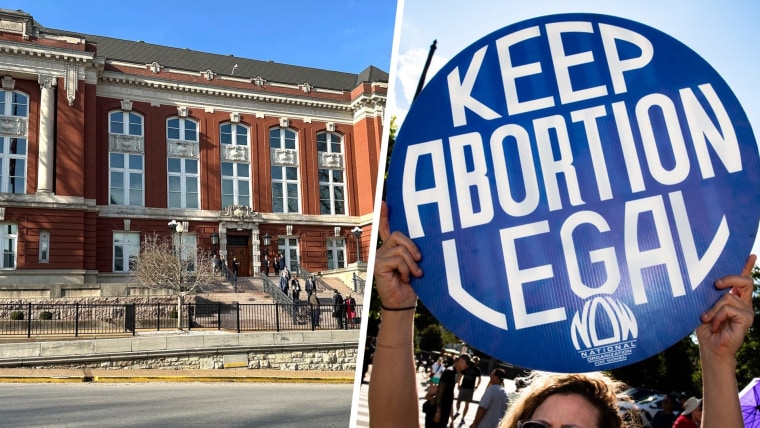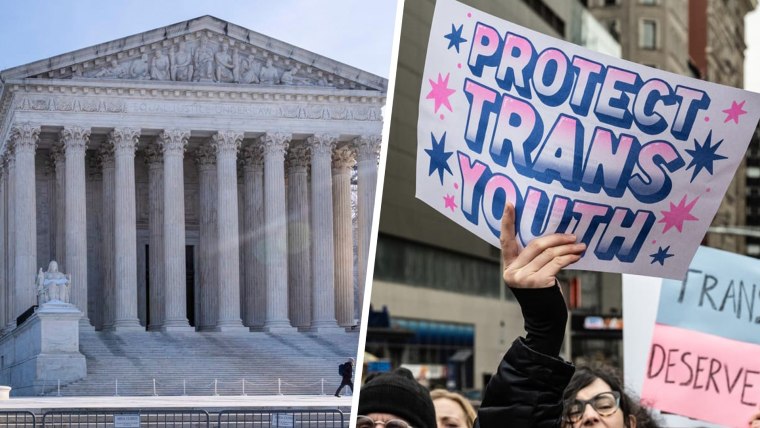Earlier this week, the Supreme Court upheld Tennessee’s ban on gender-affirming for minors. The 6-3 ruling is a major blow to transgender rights, including in the dozens of states with similar bans already enacted. To a striking degree, the majority’s analysis— and the opinions of several concurring justices — relied on cases that restricted another right: the right to choose abortion. This week’s holding shows how the fallout from the end of Roe v. Wade extends far beyond abortion.
The case, U.S. v. Skrmetti, began in 2023 when three transgender teenagers, their parents and a Memphis physician argued that Tennessee’s law constituted unconstitutional sex discrimination under the Equal Protection Clause of the 14th Amendment. The Biden administration eventually joined the suit and, in June 2023, the district court blocked the law from going into effect. Later that year, the Sixth Circuit Court of Appeals reversed, and the Supreme Court agreed to hear the case.
States could regulate a “medical procedure that only one sex can undergo,” the Dobbs majority concluded.
The plaintiffs relied on a 2020 case called Bostock v. Clayton County, a 6-3 ruling which held that sex discrimination under Title VII of the Civil Rights Act of 1963 also encompassed sexual orientation and gender identity. In the majority opinion by Justice Neil Gorsuch, the court reasoned that there was no way for an employer to discriminate based on sexual orientation or gender identity without accounting for a worker’s sex too. In other words, gender identity discrimination always involved sex discrimination. The plaintiffs in Skrmetti argued that the same logic applied to their case.
To rebut this, Tennessee pointed to Dobbs. In undoing a right to choose abortion, the Supreme Court rejected the determinations in Roe that the right to choose abortion was (as the Roe majority wrote) “founded in the 14th Amendment’s concept of personal liberty and restrictions upon state action.” But the court also rejected the idea that abortion bans were fueled by sex discrimination, and thus violated the same amendment’s guarantee of equal protection under the law.
That latter finding figures prominently in Skrmetti. There were a variety of ways of arguing that abortion bans discriminate on the basis of sex: for example, pointing to the bans’ frequent invocations of stereotypes and generalizations about motherhood. But in Dobbs, the court concluded that the discrimination argument was “squarely foreclosed by our precedents” — in particular, the rarely cited, often-pilloried 1974 ruling Geduldig v. Aiello that ruled that discriminating on the basis of pregnancy didn’t count as sex discrimination. States could regulate a “medical procedure that only one sex can undergo,” the Dobbs majority concluded, unless there was evidence that the legislation was mere pretext for discriminatory animus.

In ruling that Tennessee’s ban on gender-affirming care didn’t involve sex discrimination either, the majority opinion didn’t mention Dobbs directly (though concurring opinions by Justices Clarence Thomas and Samuel Alito did). Nevertheless, the reasoning of Dobbs ran throughout the majority opinion as well. Even if transgender individuals were the only ones to seek out treatment for gender dysphoria, the court suggested, that didn’t matter. “A State does not trigger heightened constitutional scrutiny by regulating a medical procedure that only one sex can undergo,” Chief Justice John Roberts wrote for the majority, citing Geduldig but using the language from the Dobbs ruling.
In addition to Dobbs, the majority also relied on a 2007 case called Gonzales v. Carhart, which upheld the Partial-Birth Abortion Ban Act. The federal statute prohibited a specific procedure, dilation and extraction, that the plaintiffs argued would be safer for some women (because it involved fewer passes with a sharp instrument). The high court upheld the law, however, because there was enough scientific uncertainty about the benefits of the procedure. That uncertainty, of course, was no accident: anti-abortion groups had not just fielded their own experts, but launched new organizations to establish that the procedure was unnecessary.
It’s true that gender-affirming care is a rapidly developing area of study. But the Supreme Court used that fact to give state legislatures a free pass.
In upholding bans on gender-affirming care, the Supreme Court in Skrmetti cited Gonzales v. Carhart to justify giving lawmakers “wide discretion to pass legislation in areas where there is medical and scientific uncertainty.” It’s true that gender-affirming care is a rapidly developing area of study. But the court used that fact to give state legislatures a free pass. Tennessee’s law is hardly nuanced: Violators can face penalties of $25,000 per treatment. Other states’ bans include prison sentences of five or even 10 years. None of that sounds like lawmakers carefully weighing incoming evidence about a specific treatment. But the court could fall back on its abortion cases to let legislators do whatever they want.
The message sent in the Skrmetti ruling reaches further than just the issue at hand, and not just because much of the majority’s logic would shield bans on gender-affirming care for adults too. If legislators can convince the justices that they are regulating based on a medical procedure or medical condition, the court may simply wave away any concern about sex discrimination.
This offers conservative lawmakers and activists a roadmap for circumventing protections against sex discrimination in other contexts. The Southern Baptist Convention recently endorsed overturning Obergefell v. Hodges, the decision recognizing same-sex couples’ right to marry, which relies partly on the Equal Protection Clause. The conservative Christian legal movement despises Bostock. And the Dobbs and Geduldig rulings prove that the meaning of sex discrimination has already narrowed for women.
The more these cases can be framed on turning on biological difference, the more likely the court will sign off on discriminatory laws. The court’s ruling in Skrmetti shows how much the undoing of abortion rights will reverberate beyond Dobbs, changing how the Supreme Court understands sex discrimination and transforming what equality under the law means.
